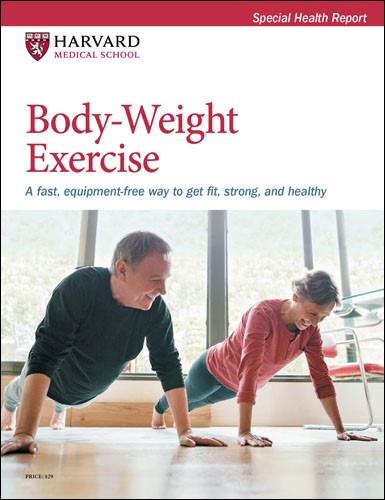Gravity’s gift
You are constantly working against gravity as you go about your daily life. Even when you’re standing still, muscles throughout your body, the so-called antigravity muscles—from your legs (calf muscles, quadriceps, and gluteals) to your upper back (the erector spinae)—are working to keep you upright. But the more you move, the more energy you’re expending to counter this unseen force.
To understand just how effective everyday weightbearing exercise is, consider the experience of astronauts, who are weightless when they are in outer space. Research has found that astronauts can lose up to 20% of their muscle mass in less than two weeks when they are deprived of the resistance of gravity. That’s because the body, in its wisdom, does not put its resources into maintaining muscles that have minimal demands placed on them. Even bone density declines at a rate of up to 10% in six months, when bones no longer have to harden themselves to withstand the forces of terrestrial life. To maintain muscle and bone mass while in outer space, astronauts have to exercise for two to two-and-a-half hours a day, using special equipment that provides resistance.
Unlike the astronauts in outer space, we on Earth have gravity to help us, day in and day out. But how much benefit you derive from it depends on how much you get up and move around. Failing to take advantage of it is like leaving dumbbells in the corner to gather dust or turning your treadmill into a clothes hanger.
Even doing a single exercise is better than doing nothing. For one study, a small group of frail 70-somethings were instructed to do 48 chair stands twice a week for 12 weeks. A chair stand (page 26) is a simple exercise in which you stand up from a chair and sit down again repeatedly, using only your muscles to power the movement. It’s a perfect example of bodyweight exercise and is something you can easily do at home, even while watching TV. And it’s surprisingly effective. During the 12 weeks of the study, the participants increased their muscle mass by about 6% (instead of seeing declines, which are typical at this age) and boosted the strength of their quadriceps (the muscles in the front of the thigh) by about 10%.
To derive the full benefits of gravity, try to meet the recommendations set out in the Physical Activity Guidelines for Americans from the U.S. Department of Health and Human Services. They specifically mention bodyweight exercise as one way to fulfill the recommendation for strength training.













